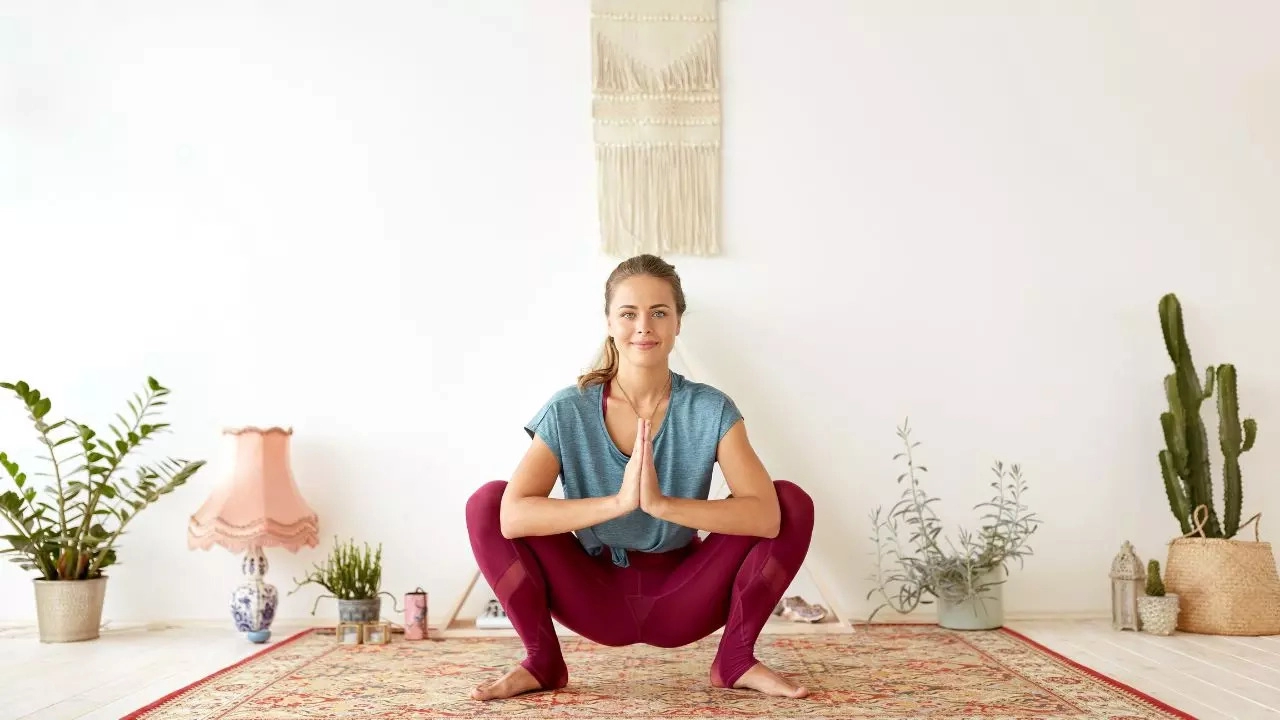Debosmita Ghosh • 22 Jul 2024
Malasana: Health Benefits Of The Garland Pose, How To Do It

Health Benefits Of Malasana And How To Do It
The word yoga means to connect or unite. To connect with the self or divine self or your soul. There are eight different parts of yoga which include yama, niyama, asana, pranayama, pratyahara, dharana, dhyana and samadhi. When you perform all of these, it helps you to achieve enlightenment. Yoga asanas and pranayama can help to cure several health conditions and manage their symptoms.
There are different yoga asanas and each of them has its own benefits. One of them is Malasana. Also known as the Garland Pose, this asana is known to have several health benefits. The name, Malasana is derived from the Sanskrit words “Mala” means “Garland” or “Necklace” and “Asana” which means “Posture”.
But first, take a look at how to perform the pose correctly.
- Start by, sitting on the mat keeping your feet slightly wider than your hips.
- Then bend your knees in a squat position.
- Then bring your hands together and join your palms.
- Press your elbows towards your inner thighs.
- Keep your hips closer to the ground.
- Keep your spine straight.
- Hold this pose for a while and then slowly come out of the pose and relax.
Health Benefits Of Malasana
Improves Digestion
Malasana helps to stimulate the digestive system by massaging the abdominal organs. The deep squat position helps to increase blood flow to the digestive tract, helping in digestion and reducing bloating and constipation.
Improves Hip Flexibility
This pose helps to stretch the hips, groin and lower back, thereby, improving flexibility in these areas. Practising this daily can help alleviate tightness and discomfort in the hips. This is beneficial for people who spend long hours sitting.
Strengthens the Lower Body
Malasana helps to strengthen the muscles of the thighs, calves and feet. When you hold the squat position, it helps to engage and tone these muscles, thereby, improving the strength of the lower body.
Increases Mobility of the Ankle
The deep squat position of this asana helps to improve the flexibility and mobility of the ankle. This can be useful for athletes and people who are looking to improve their range of motion and prevent injuries.
Improves Posture
Practising Malasana helps to correct poor posture by improving the alignment of the spine. It helps to open the chest and shoulders, thereby, reducing the impact of slouching and helping you achieve an upright, balanced posture.
Reduces Lower Back Pain
The pose helps to stretch and strengthen the lower back muscles, thereby, providing relief from lower back pain. By improving the flexibility and strength of these muscles, this pose can help reduce chronic discomfort and prevent future pain.
Relaxation and Stress Relief
Malasana has a calming impact on the mind and body. The squat position helps to reduce stress and anxiety by helping in relaxation and mindfulness. When you focus on your breath while in this pose, it can further improve its calming benefits.